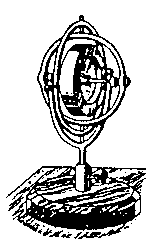
Return to CONTENTS
Kawaguchi: I hope TDC will develop VLBI observation technique in higher frequency band.
Ejiri: Toward the regular VLBI experiment in Antarctica, cooperation between NIPR and TDC is expected.
Nakahori: Since 1981, GSI has been cooperating with CRL to conduct domestic VLBI experiments. We hope these activity will grow and realize the system for the mean sea level measurement. We are now trying to reduce the error of vertical component at the observing station with schedule optimization.
Kawaguchi: I would like to know the current status of the development plan of data processor for the Earth rotation observation.
F.Takahashi: For the VLBI experiments, we observe with Mark III type DAT in international experiments and with K-4 type DAT in domestic experiments, in most cases. At the moment, data processing for international VLBI experiments is dependent on the correlator in the USA and Germany, while data by domestic experiments is processed by K-3 type correlator in Japan. We are developing the K-4 type correlator to make the best use of its advanced functions.
Kawaguchi : It is planned to develop a new correlator for 20 stations at NAO (Mitaka, Tokyo). Geodetic application is also taken into account in the design of this correlator. For K-4 correlator under development in CRL, what is the relation with Mark IV?
F.Takahashi: Mark IV is under development. We have to complete the K-4 system.
Okihara: As a future VLBI recorder, data recorder with helical scan type is very promising. Furthermore, the cost of the K-4 type data recorder will certainly decrease.
Manabe: I am afraid that the data quality of Kashima station with Mark III HD recording is not good enough. I hope it will be recovered soon . The most important item must be K-4 correlator development. And I prefer the data processing system which is capable of correlation with mixing the K-4 type data and Mark III type data.
Murata: CRL has unique opportunity to have both VLBI and SLR facility. And CRL has conducted VLBI technical development. I hope CRL will make more efforts for the SLR development. And I suggest introducing the SLR analysis software for the efficient development.
Manabe: What kind of computers will be used for the data analysis?
Y.Takahashi: They are HP-IOOO, micro VAX, and FACOM main frame computers.
Sengoku: I hope CRL will make efforts for the collocation experiment with VLBI and SLR to establish reference frame.
Kawaguchi: Are there any plan to commercialize Hydrogen maser? And I hdpe TDC will develop compact and stable oscillator which is also applicable to transportable VLBI station.
Nakayama: We can contribute to TDC with the integration of many technical aspects.
| Risao Hayashi | CRL/Tokyo |
| Akira Sugiura | CRL/Tokyo |
| Fujinobu Takahashi | CRL/Tokyo |
| Taizoh Yoshino | CRL/Tokyo |
| Hiroo Kunimori | CRL/Tokyo |
| Kuniaki Uchida | CRL/Kashima |
| Michito Imae | CRL/Kashima |
| Tetsuro Kondo | CRL/Kashima |
| Yukio Takahashi | CRL/Kashima |
| Hitoshi Kiuchi | CRL/Kashima |
| Hiroshi Takaba | CRL/Kashima |
| Seiji Manabe | NAO/Mizusawa |
| Noriyuki Kawaguchi | NAO/Nobeyama |
| Yoshiro Nakabori | GSI |
| Arata Sengoku | JHD |
| Masaaki Murata | NAL |
| Masaki Ejiri | NIPR |
| Daishiro Okihara | SONY |
| Makoto Nakayama | NEC |
Abbreviation:
CRL: Communications Research Laboratory
NAO: National Astronomical Observatory
GSI: Geographical Survey Institute
JHD: Hydrographical Survey Department
NAL: National Aerospace Laboratory
NIPR: National Institute of Polar Research